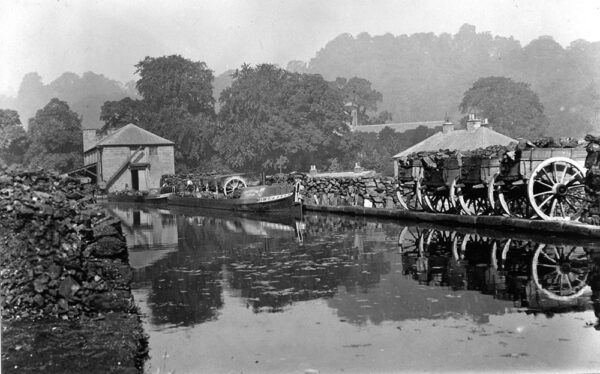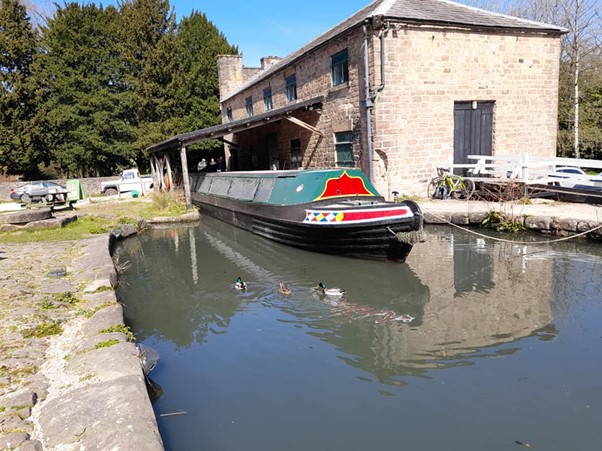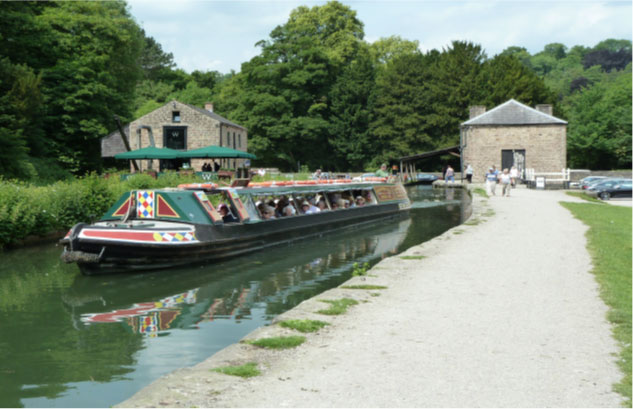The original terminus of the Cromford Canal was the basin alongside the Gothic Warehouse, built soon after the canal was completed in 1794. Here coal was unloaded from pits further down the canal and limestone was loaded for export from local quarries. Many other goods were also shipped through the wharf.
The second (‘Feeder’) arm was built around 1822 to serve local limestone quarries. A second warehouse was built alongside it and today this is Wheatcroft’s Wharf café.
The area that is now the car park was once a large enclosed wharf made secure by a high surrounding wall (some of which can still be seen) and large entry gates from Mill Road. The two houses were built to accommodate wharf employees. Today one is a private residence and the other holiday accommodation.
The full story is told in the FCC publication Cromford Wharf – A History available online here.

In the photo above, in August 1906, the narrow boats Onward and Bristol lie at Cromford Wharf with huge lumps of coal neatly stacked, and the carts lined up waiting to deliver it locally. The operation was run by Wheatcrofts and continued up until the Second World War, despite this section of the canal being isolated from the main system by the final collapse of Butterley Tunnel in 1900. The coal came from Pentrich and Hartshay pits, to the west of the tunnel. Before the railways offered competition, Wheatcrofts had been based at Buckland Hollow, from where they operated fast and regular services carrying all kinds of goods. They later moved to Cromford, where they concentrated on the coal business.
When boat traffic finally ceased, they brought the coal in by road. The original ‘gothic’ warehouse is to the left with its crane attached to the near-left corner, whilst to the right is the roof of the Agent’s house and, beyond that, Arkwright’s church.


